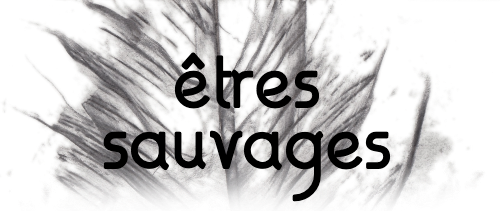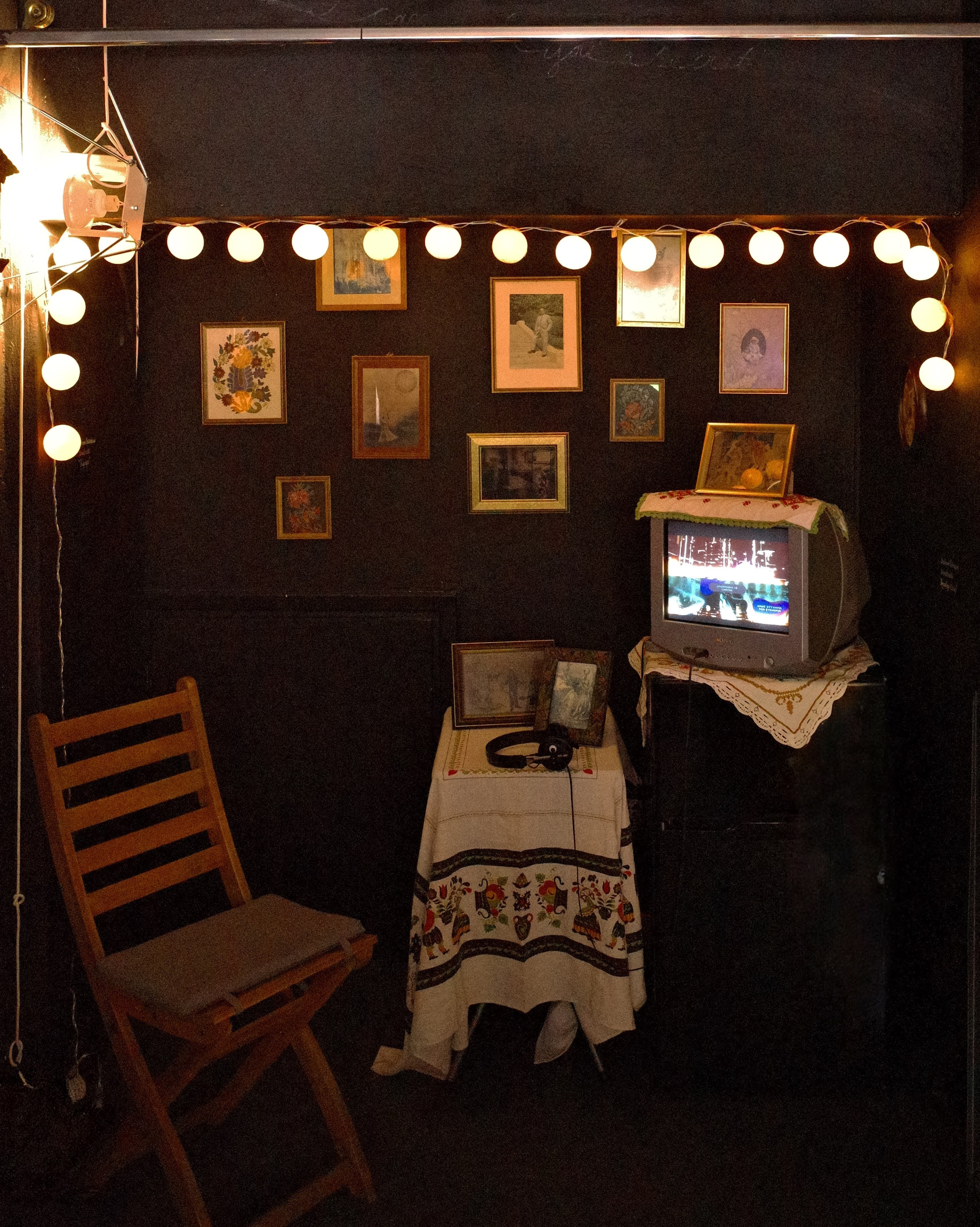Manuel de référence des in·utilités
Written on February 5th, 2023 by Dialekti Valsamou-Stanislawski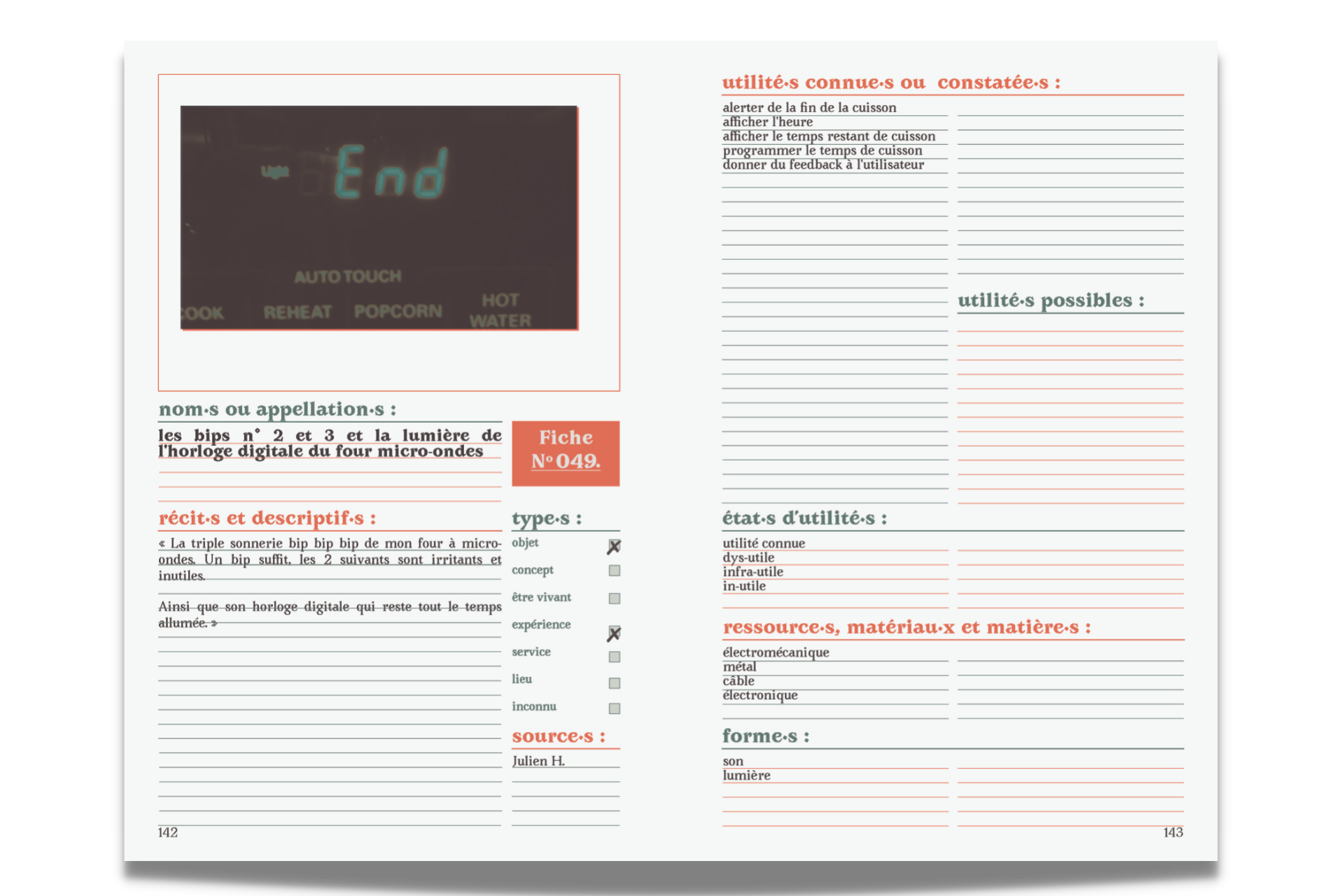
Book (329 pages), website
2022
Description
This artifact—this product of work—is a functional object, true to the principles of design fiction and discursive design, which propose practical objects to provoke dialogue, reflection, and the communication of ideas.
“What does this do?”
“Public utility.”
“User-friendly.”
“A useful vote.”
“Multi-functional.”
“It’s useless!”
Utility is so omnipresent that one might assume it is self-evident. Yet, upon closer inspection, we find ourselves questioning objects, activities, concepts, lives, and choices of all kinds, raising important questions about ourselves and our society.
This work aims to disrupt the audience’s relationship with utility and its place in both conscious and unconscious collective thought. I asked as many people as I could: “What is useless?” The question proved to be accessible to everyone.
I used the hundreds of different responses I gathered to create the Manuel de référence des in·utilités, a handbook that proposes a useless anthology, a theory, and a hyper-specialized vocabulary. The manual is set in a neo-utilitarian future, obsessed with utility and the cost of resources.
In this world:
- Repair classes are part of school curricula, ensuring that people are never burdened with impractical objects.
- Playing the saxophone is considered semi-useful, as it improves instrumental dexterity.
- The most sought-after profession is that of a utility technician, responsible for transforming outdated, overly specific, or single-purpose machines into multi-functional ones.
Incidentally, my father would thrive in this universe. He enjoys keeping everything he has ever used, even after it has become de-functionalized—or, as he might say if he knew the terminology, pre-functional.
Excerpts & Visuals
📖 Read excerpts from the handbook:
View PDF (in French)

Render of the handbook, designed to resemble a school textbook from the world it describes.
Production & Research
The book was created after months of research and experimentation, drawing from an anthology of objects that I compiled through informal interviews—conducted in person, via WhatsApp, other social networks, or email.
From hundreds of responses, I constructed the Manuel de référence des in·utilités, which includes:
- A dictionary → Around 50 hyper-specialized terms to express all shades of utility and uselessness.
- A theory → Defining principles, rules, and equations of utility.
- A bibliography → A mix of journalistic and educational texts, written by both human collaborators and AI.
- An anthology → 130 educational cards for analyzing (in)utility.
This project was built in a circular, participatory way—through exchange and collaboration, inviting and including its audience.
For its design, I used multiple tools, including:
- Linguistics
- Artificial intelligence (ChatGPT)
- Graphic design & typography
While I often sought consistency, I sometimes deliberately deviated from it. My implicit or explicit criteria always revolved around utility: if consistency was useful—as motivation or obstacle—I kept it.
Design & Publishing Approach
For graphic and editorial design, I used Affinity Suite, maintaining a minimalist layout inspired by school textbooks—aligning with the values of the fictional world described in the book.
I reused open-source fonts and materials and opted for a reduced color palette, drawn from abundant natural hues. The initial print project was planned for risograph printing, a method that aligns well with the concepts of reuse and efficiency central to the work.
Alongside the book, I collaborated with Alexandre V.S. (programming) to create a digital version of the anthology.
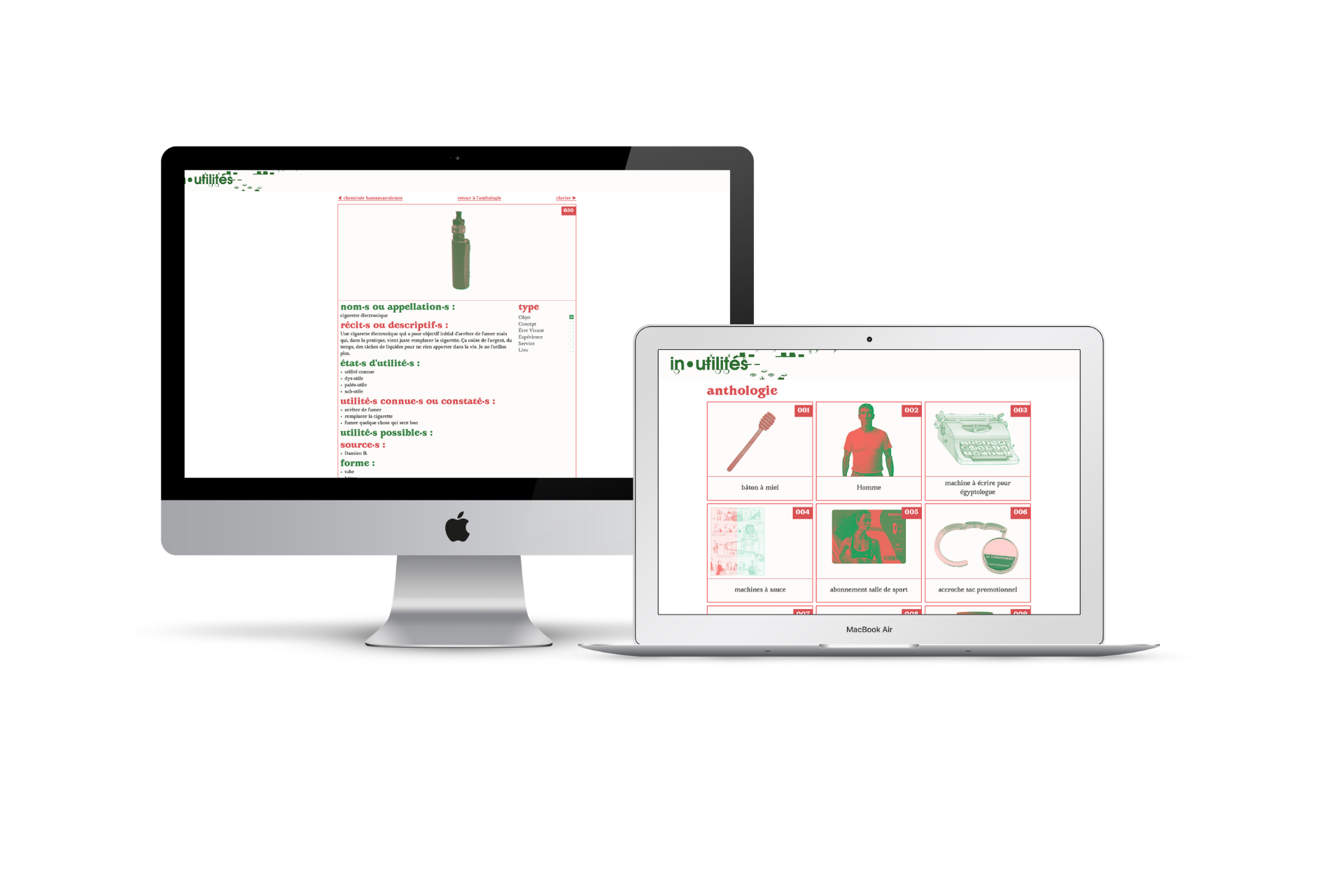
Online anthology website (French): https://in.utilites.page/fiches
Presentation & Academic Context
This work was developed as part of my Master’s thesis at ENSCI-Les Ateliers (Paris). It was presented in January 2023, along with supporting research materials used in its creation.
📖 Read the full research documentation (French):
Research Thesis
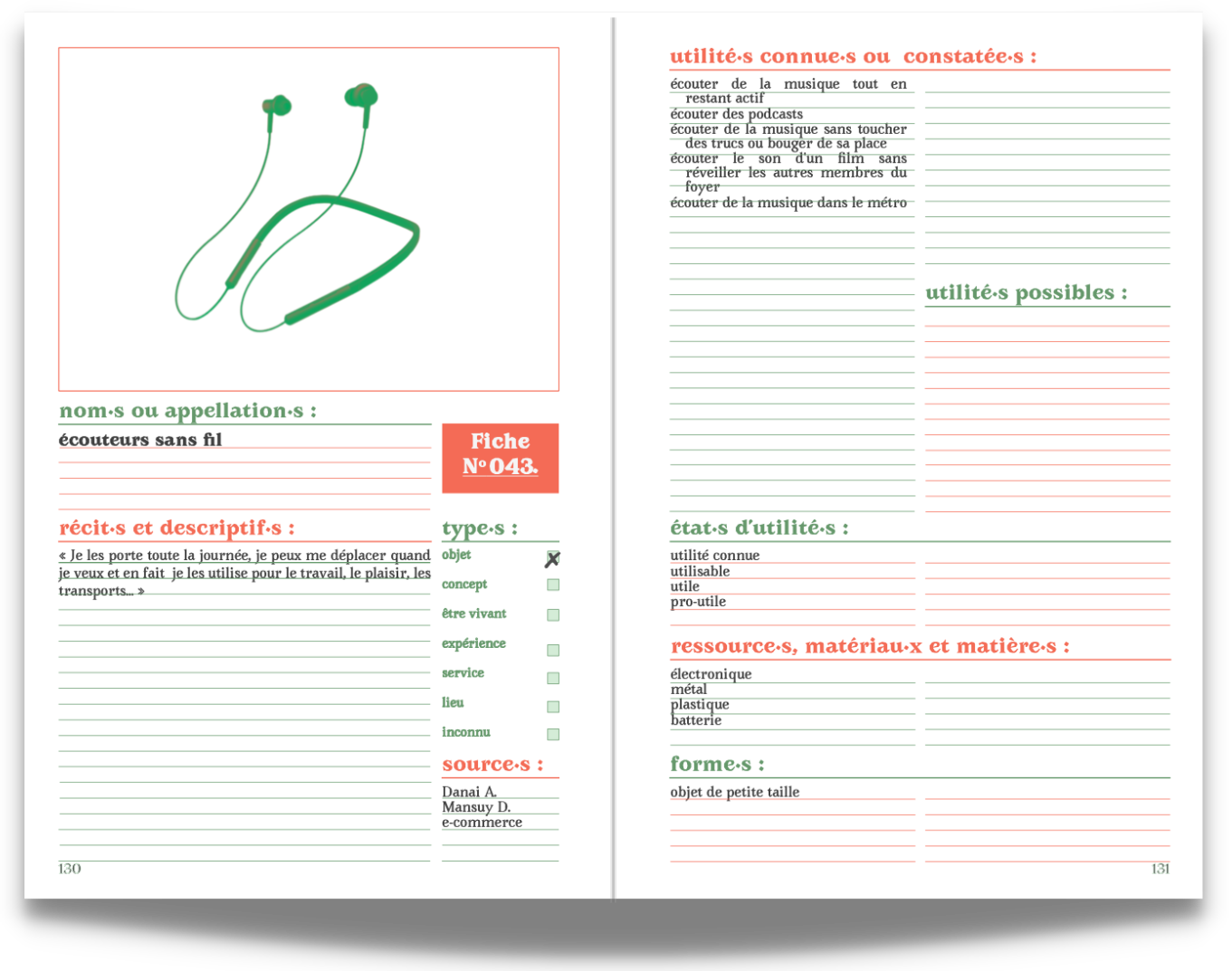
An entry as it appears in the reference manual. The empty space, styled like a notebook, was designed for note-taking and the addition of future utilities—inviting active audience participation.
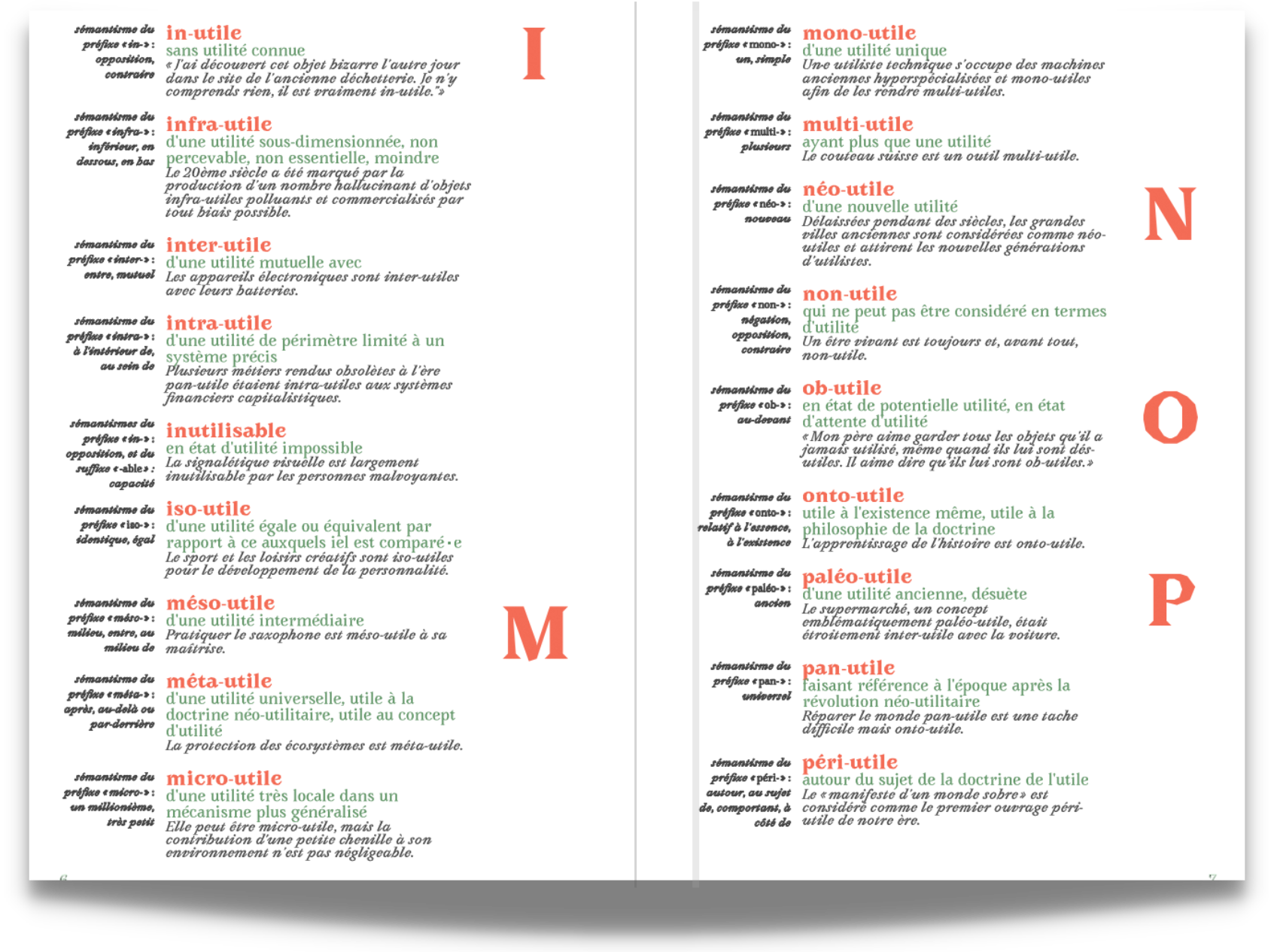
A two-page spread from the dictionary, featuring hyper-specialized terms.

